MechaChain is a future space conquest and robot combat video game developed by Kevuru Games, and published by Gameverse Publishing. Our team was honored to become a trusted partner of Gameverse Publishing.
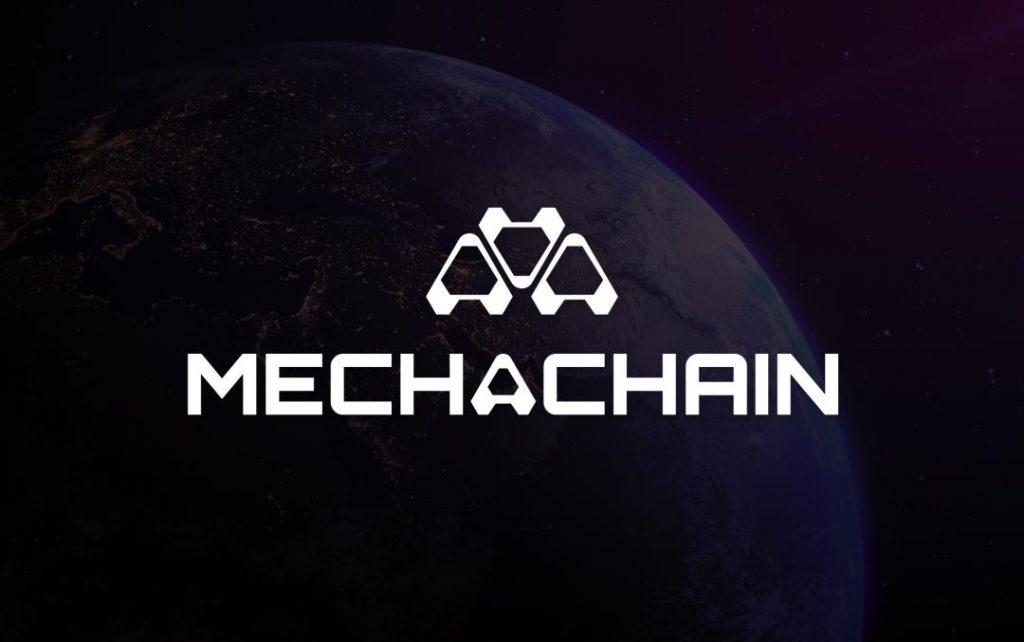
Key Project Details
Goal
The goal in developing this project was to create a mobile shooter that features top-notch graphics quality and pushes the limits of mobile device capabilities, paired with engaging gameplay that captivates players and makes it impossible for them to tear themselves away.
The Challenge
The main challenge was to understand the style and vision of the game universe – the client provided detailed information on this as well as key concepts and references.
Team Composition
The full-cycle development of a large-scale game required the involvement of all our key professional areas:
– Game Design Team: Game Designers, Script Writers, Level Designers;
– Technical Team: Unity Developers, Back-end Developers, Front-End Developers, Technical Artists, QA;
– Art & Animation Team: Concept Artists, 2D Artists, 3D Artists, 2D Spine Animators, 3D Animators, Sound Designers;
– Management: Leads, Project Managers, Community Managers.
Initial Data
Let’s look at how the project works, its special features, and the source material we used to start development.
Gameplay Details
We created a groundbreaking mobile online shooter, with 6v6 battles, which will engage our players on the digital battlefield.
The game narrative is a mechanized warfare, where each Mech is equipped with four pivotal modules:
- Bodies;
- Weapons;
- Shoulder Modules;
- Back Modules.
There is an option to evaluate Mech’s capabilities by upgrading each module with a combination of resources and in-game currency, progressing from common to legendary rarity levels to gain the ultimate competitive advantage. We developed two different game modes:
Mechanium Extraction Mode: It engages in strategic resource gathering, where each team competes to harvest valuable in-game currency with strategically positioned harvesters.
Bomb Interception Mode: Counterparts must hold the ground while the player tries to secure the bomb and dismantle enemy generators before they can wreak havoc on the player’s team.
In both modes, players must eliminate enemy Mechs in addition to the primary objectives.
Start of Cooperation
To begin with, we needed to outline the areas of responsibility of our team and the client’s team. Having turned to our full-cycle development services, the client already had:
- Game lore, script, and narrative.
- The visual concept of the game universe.
- Art vision of combat robots mechas.
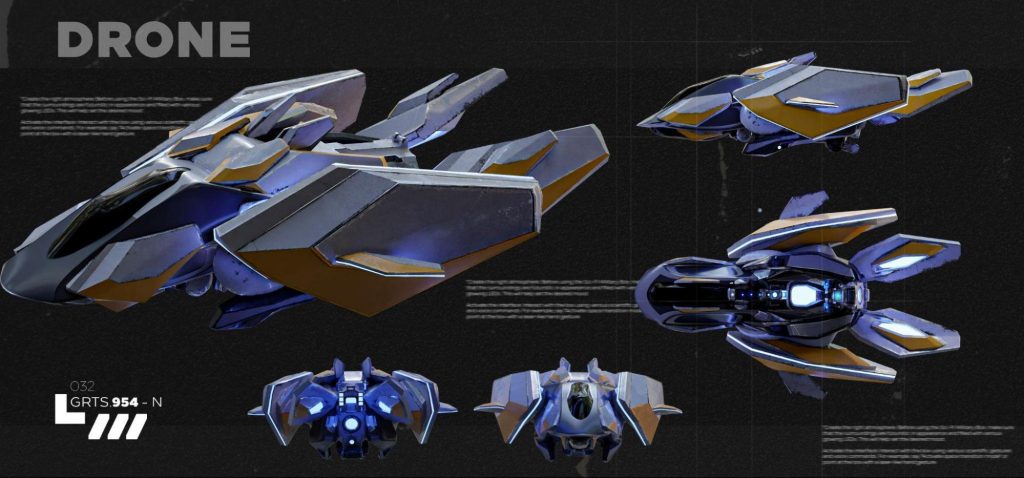
Since the Mecha creation was on the client side, our art task was to conceptualize and model modules that are added to Mechas and give them certain properties, Mecha weapons with which they can damage the enemy, and individual elements of the map: hangar, environmental elements, buildings, etc. In addition, our full-cycle development tasks included:
- Animation
- Development
- Testing
- Game design
- UI/UX
- Technical art
- VFX
- Sound
Following adjustments to our client collaboration format, the Kevuru Games team conducted a comprehensive review of the project’s visuals and gameplay. As a result, we implemented key changes into the development process. More information on this will be provided in upcoming articles.

Workflow
We have divided the work into 6 key stages to better structure large amounts of work and prioritize the tasks according to the goals set in each stage.
1. Discovery and GDD Stage
Simultaneously with the development of high-level design documents, mood boards were created and an art style was selected for the artists’ subsequent work.
Together with the development team, an analysis of potential game mechanics was conducted to evaluate their implementation possibilities with the engine’s technical tools.
An assessment was made of the potential use of popular game features for the creation of game progression and the potential monetization of the project. In addition, mock-ups of the user interface and game icons were created.

Subsequently, the game designer’s work consisted of interacting and coordinating with other departments, creating technical specifications for individual specialists and balancing the game mechanics.
2. Project Estimation and Production Start
Once we have obtained all the necessary information, we draw up a project estimate and agree on the key development stages: prototype of the game, vertical slice, closed alpha version, open alpha version and release. Heads and leads have spent weeks on detailed planning. As a result, the project should be ready for release in about 2 years, but we also allow for a certain number of additional weeks in case certain changes or additions need to be made.
3. Game prototype
The game prototype covered the realization of basic game mechanics, where the team was able to test mechanics and ideas in an agile workflow.
On this stage following features were implemented:
- 1 Mech class
- 1 map blockout
- Several weapons and modules
- Core game systems
- Draft game design & balance documents
- Architecture and tech documentation
- Multiplayer backend infrastructure
4. Vertical Slice
The vertical slice stage includes the preparation and deployment of all game mechanics that allow the client and the player to understand the main concept of the game. The result of this stage is a playable version of the game with the basic features implemented. With its help, we and the client can understand what has been done successfully and what needs to be adjusted. The implementation of the basic logic of all features consists of the following tasks:
- Creating concept art, mecha models and their animations
- Finished 1st map, drafting 2nd one
- Developing multiplayer
- Adding UI, new weapons, modules and skills
- Building additional game systems
- Creating VFXs and sounds
Modules
Modules are technological additions to Mechas that are attached to them like elements of a constructor and offer unlimited customization options. The player can customize his Mecha by installing various modules that affect the Mecha’s characteristics (attack, defense, speed, etc.):
- Back modules (wings, reactors)
- Shoulder modules (left and right)
- Weapon modules (left and right forearm)
- Energy core
3D models implement the first 3 points. The energy core is highlighted with the same color on all modules. The Epic rarity is accompanied by a flashing light, the Legendary by additional effects. The more unique modules, the more authentic the Mecha looks and the stronger the pilot becomes.
The work on the modules for Mechas on our part was done by downgrading the Mechas with the highest rarity modules received from the client. What does that mean? It means that we receive the robot in a complete set with the rarest modules from the client and gradually remove the module parts to restore the Mecha to its original state.
There are a total of 5 module rarities in the game, from Common to Legendary. Each rarity has its own appearance and characteristics.

Weapons
The weapon is the basic tool for the Mechapilot to fight enemies. Of course, the sci-fi setting and interplanetary battles of the distant future imposed certain requirements on weapons – it had to be something futuristic, powerful, and at the same time authentic to the gaming lore. The creation of weapons was realized from scratch in several stages:
- The game designer collects references and prescribes the functionality of the weapon.
- The concept artist creates several weapon sketches.
- The art director on the client side approves the concepts.
- Our 3D modelers model according to approved concepts.
The weapon module can be attached to the Mecha’s left or right forearm. The weapons we have developed include automatic rifles, impulse rifles, and light machine guns. Each of them has its own description and features, offering a variety of combat possibilities and an interesting history of creation. For instance, two engineers who later ended up on the other side of the barricades developed one of the rifles. One, the future Pure-Gene, gave it a shape and a name, and the other, the potential Assimile, worked on its functionality.
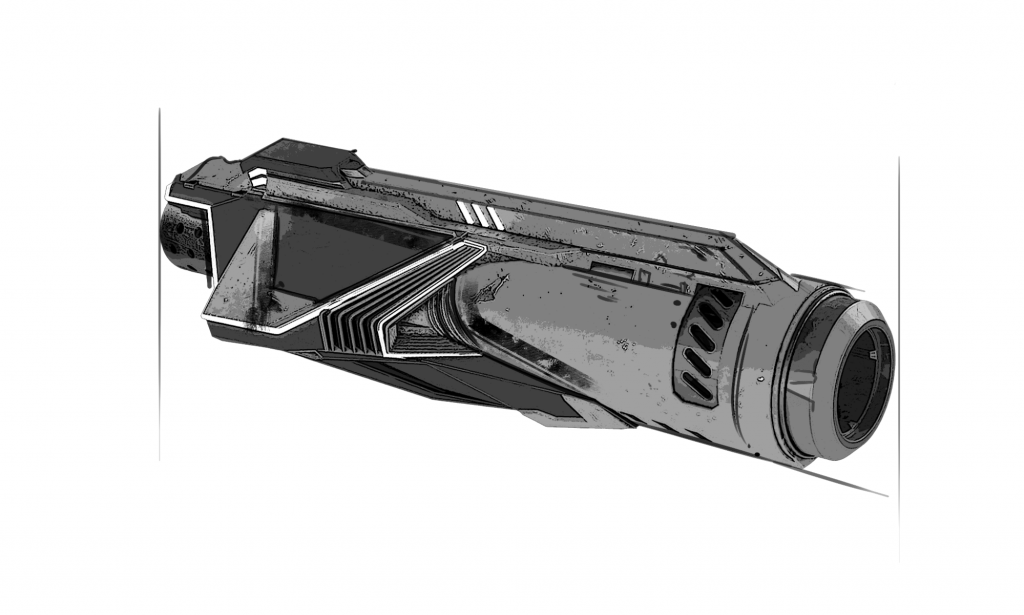

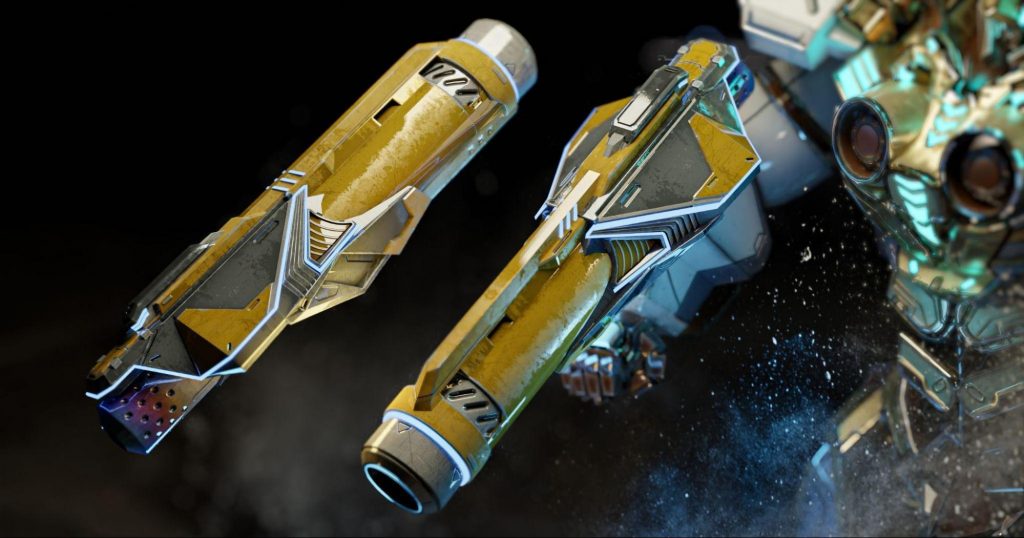
Environment
The game offers 2 planets, each with a battle arena. Level design implies 3 key areas of the map:
- Team A spacecraft landing zone.
- Team B spacecraft landing zone.
- Game mode points of interest. In Mechanium Extraction mode these are extraction places. In Bomb Interception these are bomb holders and places where they have to be placed.
The goal of the match is to fulfill the main mission of the game mode and destroy the opponents. The battle involves 12 players, 6 from each faction. The match ends when one of the factions completes the mission or when the timer runs out.
In addition to the battle arenas, there are colonies on the planets that belong to the different factions. Our task was to create various environmental elements for the battle arenas and colonies, e.g. spaceships for both factions, individual buildings and objects of the urban environment (benches, stairs, pillars, kiosks), Mechanium containers, and more.
The game also features a workshop area, the so-called hangars, where the player can manipulate modules and view the effects, properties, and attacks of the collected Mechs. This is a kind of hub where players can take a break from combat and lick their wounds.

5. Closed Alpha
At the closed alpha stage, our team ensures the implementation of the full logic of all features and a full-fledged multiplayer. The game is available for a closed circle of users.
The following features were implemented at this stage:
- Creating all mecha bodies, weapons
- Finishing 2nd map
- Developing backend functionality
- Adding UI
- Creation tutorial
- Building additional game systems
- AddingVFXs and sounds
In this stage, also called closed testing, the client launches the game and runs it with all game mechanics to ensure everything works correctly. This applies to the assembly of Mechas, their controls, and battles.
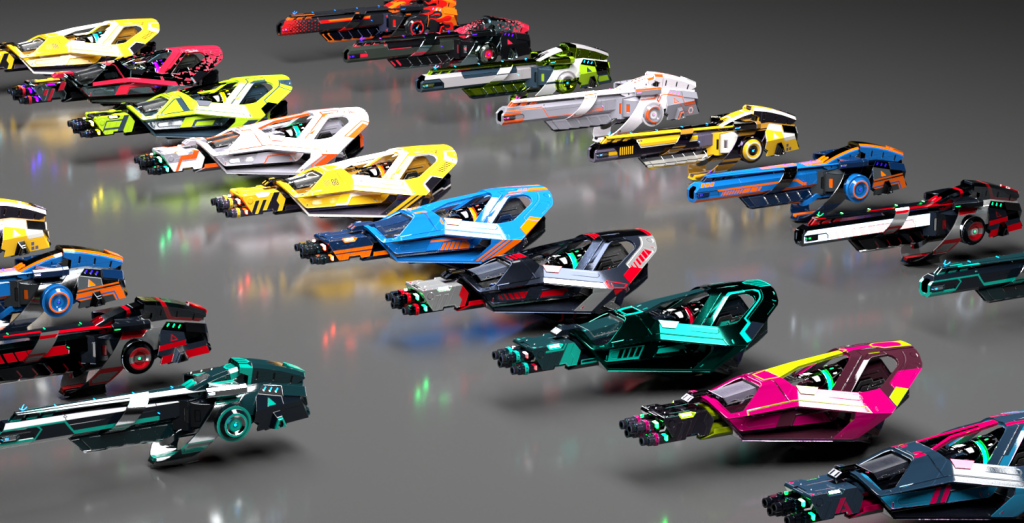
5. Open Alpha
After receiving information from the client about possible wishes and adjustments from the previous stage, we prepare the game for presentation to the players. Our team fixes visual bugs during the open alpha test stage and finalizes all modules and server functions. The game becomes available for testing by the project community, so all planned features and work should be completed at this stage.
The following functions were implemented at this stage:
- Adding detailed game analytics
- Balancing maps and equipment
- Adding shoulder and spine modules
- Implementation of all passive and active skills
- Creation of player progression
After testing the game, the gaming community also gives its verdict on the general readiness of the game for release and provides feedback with possible wishes and comments.
6. Release
Thanks to the gaming community’s participation and comments, we are finalizing the game and fixing possible bugs.
We wait for this exciting moment in the near future. There may be delays during the development process, so the release date is flexible. However, we can say for sure that in the first half of next year, many players will be able to try out the brand new profession of Mechapilot.
The following features were implemented at this stage:
- Preparing release environment
- Fixing & polishing of bugs
- Updating UX
- Implementation of skin system
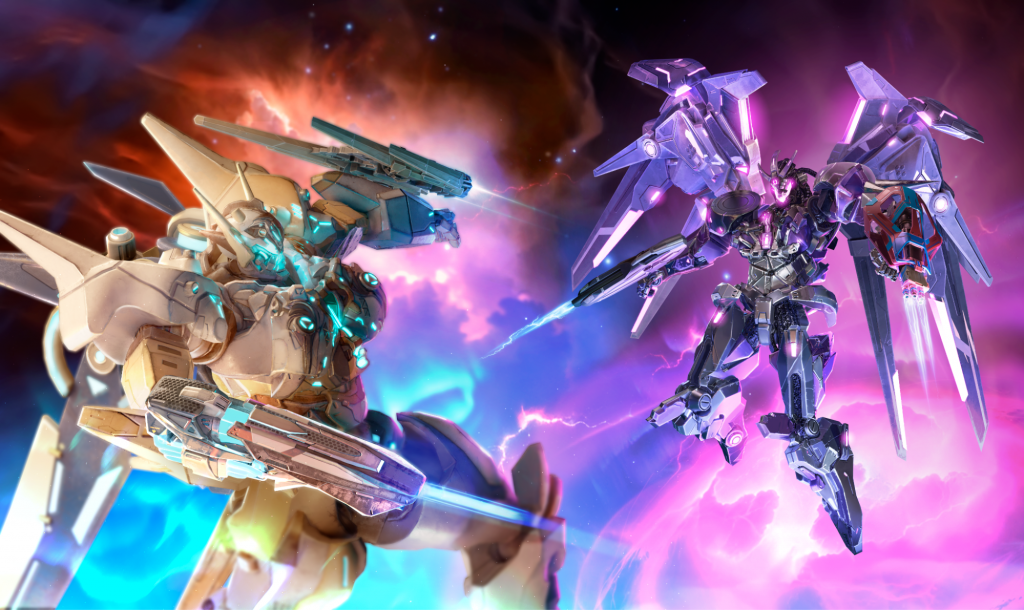
Value Delivered
Based on the client’s vision and utilizing our extensive experience in game development, our team created an immersive game design for MechaChain. We provided a range of services and created a captivating game that has gained a loyal fan base. From the conception of basic game mechanics to the complex design of gameplay features and the refinement of game economics, every aspect was meticulously tuned to keep players engaged.
Using the client’s art concepts, we meticulously designed and modeled a variety of weapons, Mecha modules, and map elements. Each element was precisely designed to fit seamlessly into the setting and overall aesthetic of the game.
Our deep understanding of coding and mastery of cutting-edge tools and methods allowed us to ensure the flawless execution of every aspect of the game. Our commitment to excellence and drive to push the boundaries of game development have resulted in MechaChain being not just a game but a testament to innovation and engaging entertainment, with a dedicated and growing base of followers.
Join the Mechapilot Team
You can get MechaChain on the App Store or Google Play and take part in space battles to experience the result of our work yourself. See you in the new Mecha era!


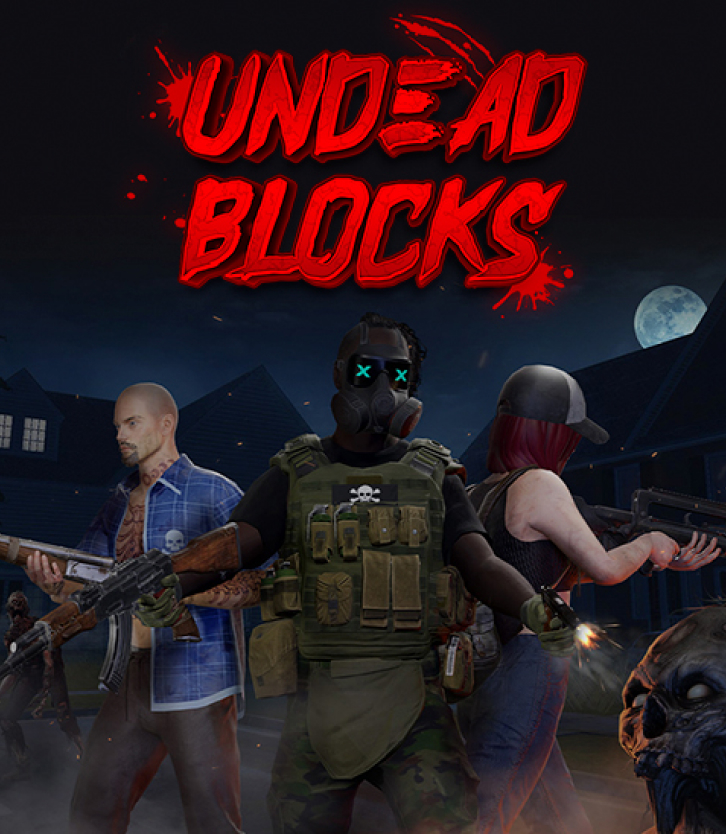
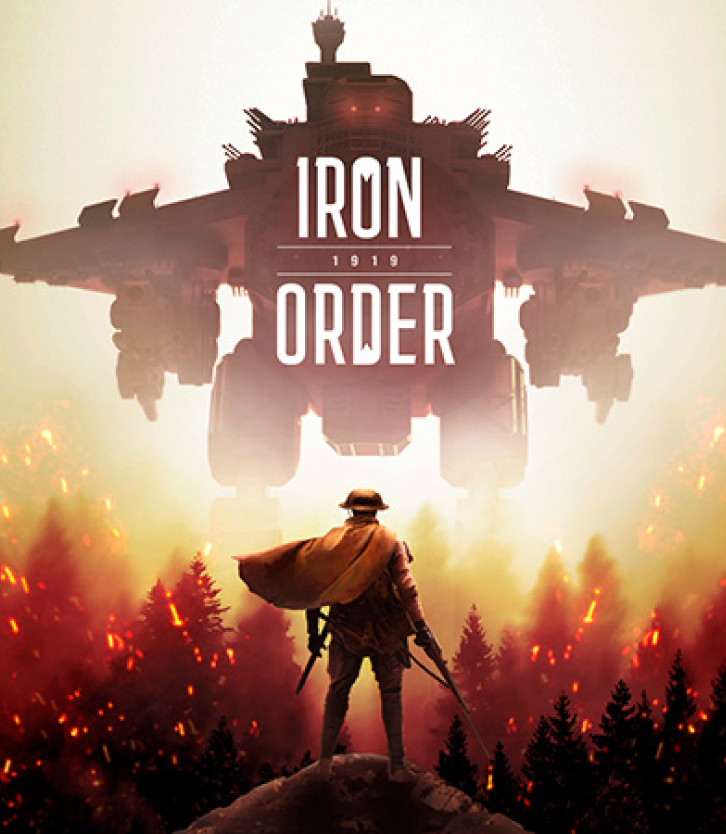
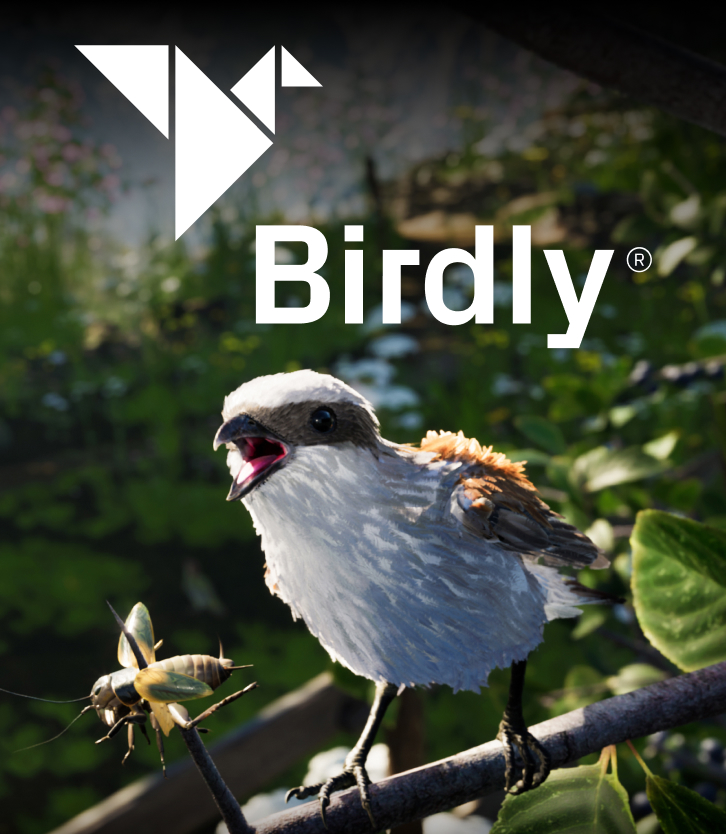
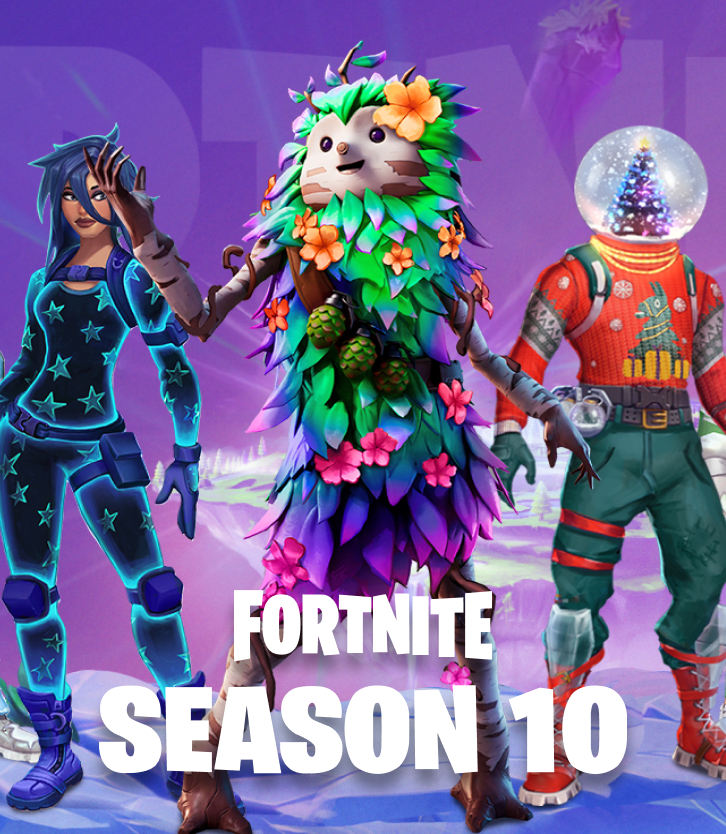
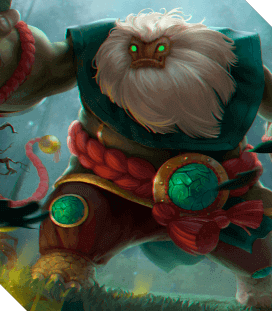
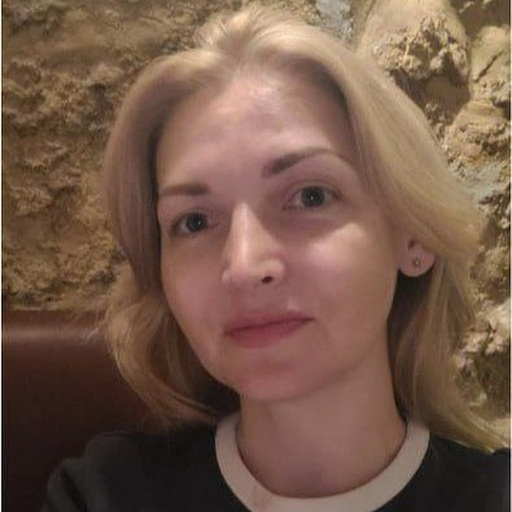

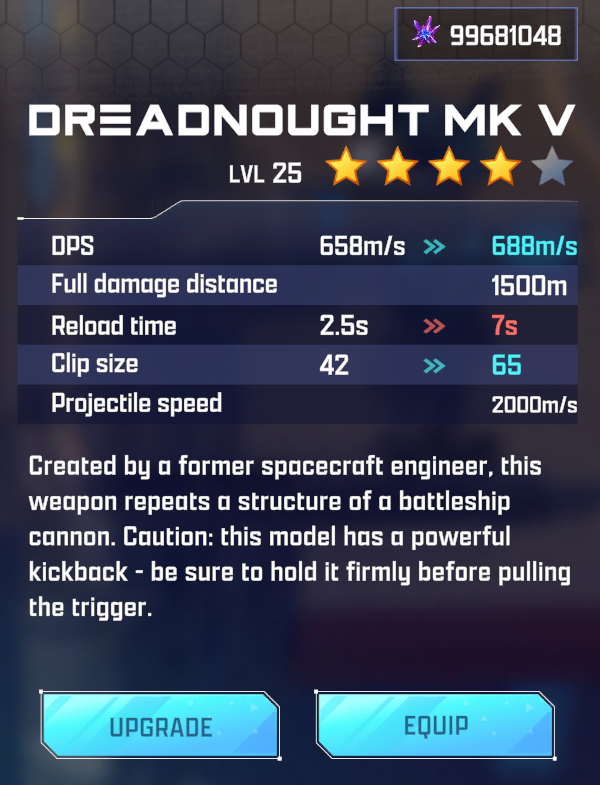
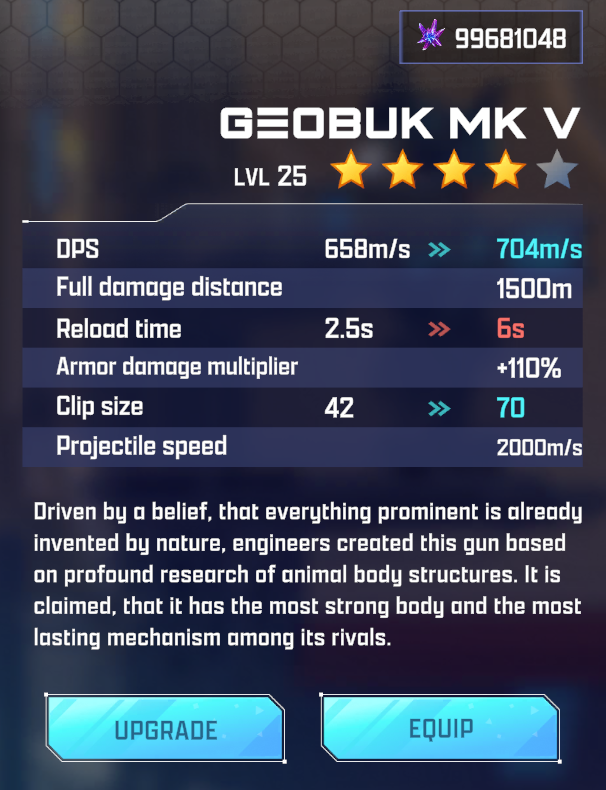

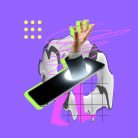

![Indie Game Development: Guide to Revenues, Most Profitable Genres & Monetization [+10 Best Indie Games 2024]](https://kevurugames.com/wp-content/uploads/fly-images/11949/indie-pre-138x138.jpg)